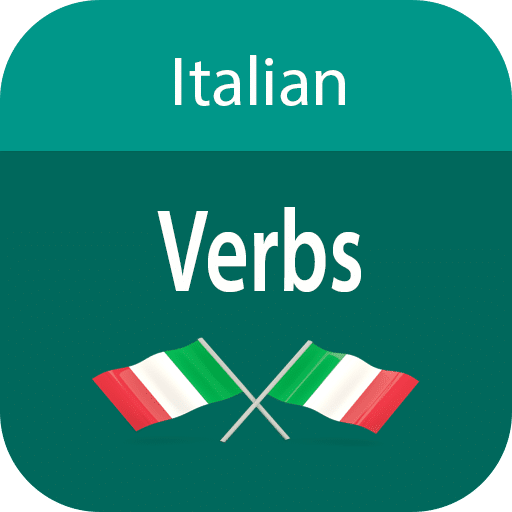Mastering the art of Italian verb conjugation is fundamental and one of the most significant parts of learning Italian.
Verb Conjugation helps learners with a key that unlocks fluency and makes the communication expressive.
Those who have taken the formal Italian class would know how crucial a role the verb plays.
This comes from several professional speakers who say that learning Italian is extremely tedious and frustrating for many, especially when playing with the verb at first.
But why is the arrangement in Italian so important, and how can one get along?
If you are also an early Italian speaker or want to get started with this journey of yours, then worry no more; we have got you covered.
This article will dive deep into conjugation to make learning verbs easy for kids and adults. So, without any further ado, let’s begin.
What is a Verb? The Italian Perspective and Conjugation
Before diving deep into verb conjugation, we must learn about verbs and their significance.
So, initially, we will look at the relevance of verbs and their usage in Italian.
In Italian, a verb holds top-notch significance in a sentence; this denotes an action, a subject’s position, and the state of being or its occurrence.
The verb’s conjugation is fairly easy in Italian; this doesn’t require you to do a lot of memorization, and there are only 12 tenses.
One of the simplest techniques to conjugate Italian verbs is identifying the verb and its infinitive form.
Italian Verb Conjugation and its Importance
In English, verb conjugation is unimportant because we always have the subject pronouns ahead; for example, I play, you play, we play.
However, in Italian, the usage of subject pronouns is opted out for the use.
Ultimately, the only way to know who is taking the action and when is by interchanging the verb’s ending, known as conjugation.
Conjugating Verbs in Italian
To conjugate the verbs, there is always the requirement to keep the verb’s infinitive in mind.
Infinitive is the base form of any verb, which can be found in any dictionary.
It generally implies “to along with any kind of verb” in English.
For a better understanding, we have curated a table for you:
| Infinitive in Italian | Infinitive in English |
|---|---|
| cucinare | to cook |
| mangiare | to eat |
| aspettare | to wait |
| lavorare | to work |
Here, we have listed three steps to understand the conjugation of Italian verbs much better:
- Any verb in Italian needs to have a separate ending added to its stem for the conjugation.
- Regular verbs have an infinitive that ends in three letters, which must be removed to obtain the verb’s stem. For instance, the stem of the verb ‘parlare’ (used “to speak” in English) is parl. We can obtain the stem by taking off the final three letters of the verb parlare’s infinitive.
- All we need to do is use the stem parl- and the appropriate ends for each conjugation/subject to easily conjugate in different tenses.
Let’s Take, for Example:
- parl-o: I speak (present simple)
- parl-avo: I was speaking, or I used to speak (imperfect conjugation)
- parl-erò: I’ll speak (future tense)
Conjugating in Regular and Irregular Verbs
The rules that we detailed above apply only to regular verbs. But what are the differences between the two?
In this segment, we will take a glance at both of them.
1. Regular Verbs
Regular Verbs are those verbs whose conjugations follow standard patterns. Its conjugation is fairly simple.
For this to proceed along, all you are supposed to do is memorize the standard conjugations and use them in the sentence.
The typical example of regular verbs in Italian are: studiare, mangiare, lavorare, ballare, cominciare, terminare, etc.
2. Irregular Verbs
Irregular verbs do not follow the same conjugation patterns as regular verbs (the vast majority of verbs).
While conjugating irregular verbs, the basic stems for conjugation patterns vary.
The stem to which conjugation patterns must be attached varies when conjugating irregular verbs.
One example of an irregular verb is the verb ‘dire,’ (which means “to say, to tell.”)
The verb’s root is ‘dic-,’ not just ‘d.’ ‘Volere’ is another frequent irregular verb (to wish).
The verb stem is not ‘vol-,’ but rather, depending on the individual, ‘vogl’ or vuo-.’
These irregular stems will require the addition of standard ends.
The best technique to handle irregular verbs is to prepare a list of the most often occurring verbs and commit them to memory.
Language is important in learning about the culture and lifestyle of a civilization and society.
Learning new languages only enhances your idea about the global community in the best possible manner and opens a world of possibilities beyond any degree of imagination.
With this, we have covered the most insightful yet essential aspects of Italian Verb Conjugation.
However, for detailed clarity on the subject matter, we will highly recommend this tutorial, a link to which has been embedded in the section underneath.
Conclusion
As we have explored the various elements related to tenses and moods, it becomes extremely important to practice them to gain frequent momentum.
Analyzing and learning the patterns of regular and irregular verbs is crucial to the journey.
Fluency can only be achieved after exposing to the environment of native speakers, where one can get detailed clarity.
Beyond that, technology also plays a crucial role in helping with learning any language, where numerous apps and other online resources help master the art of any language.
It is essential to note that learning a language is not an overnight journey; rather, it is a gradual process that requires patience and, above all, interest.
Feel free to share your thoughts in the comments for any further queries.


